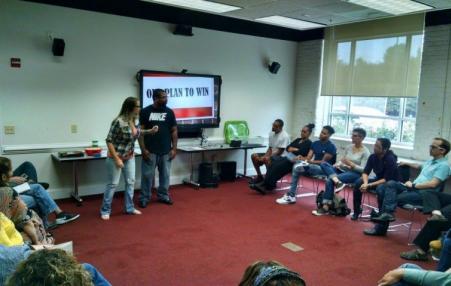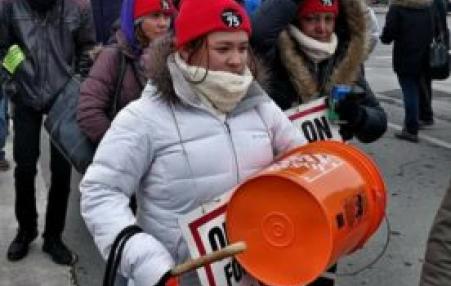Workplace Fatalities: 25 Most Dangerous Jobs in America
USA Today
 Welcome to Interviews for Resistance. We’re now nearly one year into the Trump administration, and activists have scored some important victories. Yet there is always more to be done, and for many people, the question of where to focus and how to help remains. In this series, we talk with organizers, agitators, and educators, not only about how to resist, but how to build a better world.
Welcome to Interviews for Resistance. We’re now nearly one year into the Trump administration, and activists have scored some important victories. Yet there is always more to be done, and for many people, the question of where to focus and how to help remains. In this series, we talk with organizers, agitators, and educators, not only about how to resist, but how to build a better world.
 Unions in Canada suffered some setbacks in 2017. However, movements like the Fight for $15 and Fairness show a potential way ahead. In 2018, those looking to renew the labor movement need to build power from below, encourage greater membership involvement, forge international solidarity, and confront governments, even those that are ostensibly friendly.
Unions in Canada suffered some setbacks in 2017. However, movements like the Fight for $15 and Fairness show a potential way ahead. In 2018, those looking to renew the labor movement need to build power from below, encourage greater membership involvement, forge international solidarity, and confront governments, even those that are ostensibly friendly.
 The way major U.S. companies provide for retiring workers has been shifting for about three decades, with more dropping traditional pensions every year. The first full generation of workers to retire since this turn offers a sobering preview of a labor force more and more dependent on their own savings for retirement.
The way major U.S. companies provide for retiring workers has been shifting for about three decades, with more dropping traditional pensions every year. The first full generation of workers to retire since this turn offers a sobering preview of a labor force more and more dependent on their own savings for retirement.
Spread the word